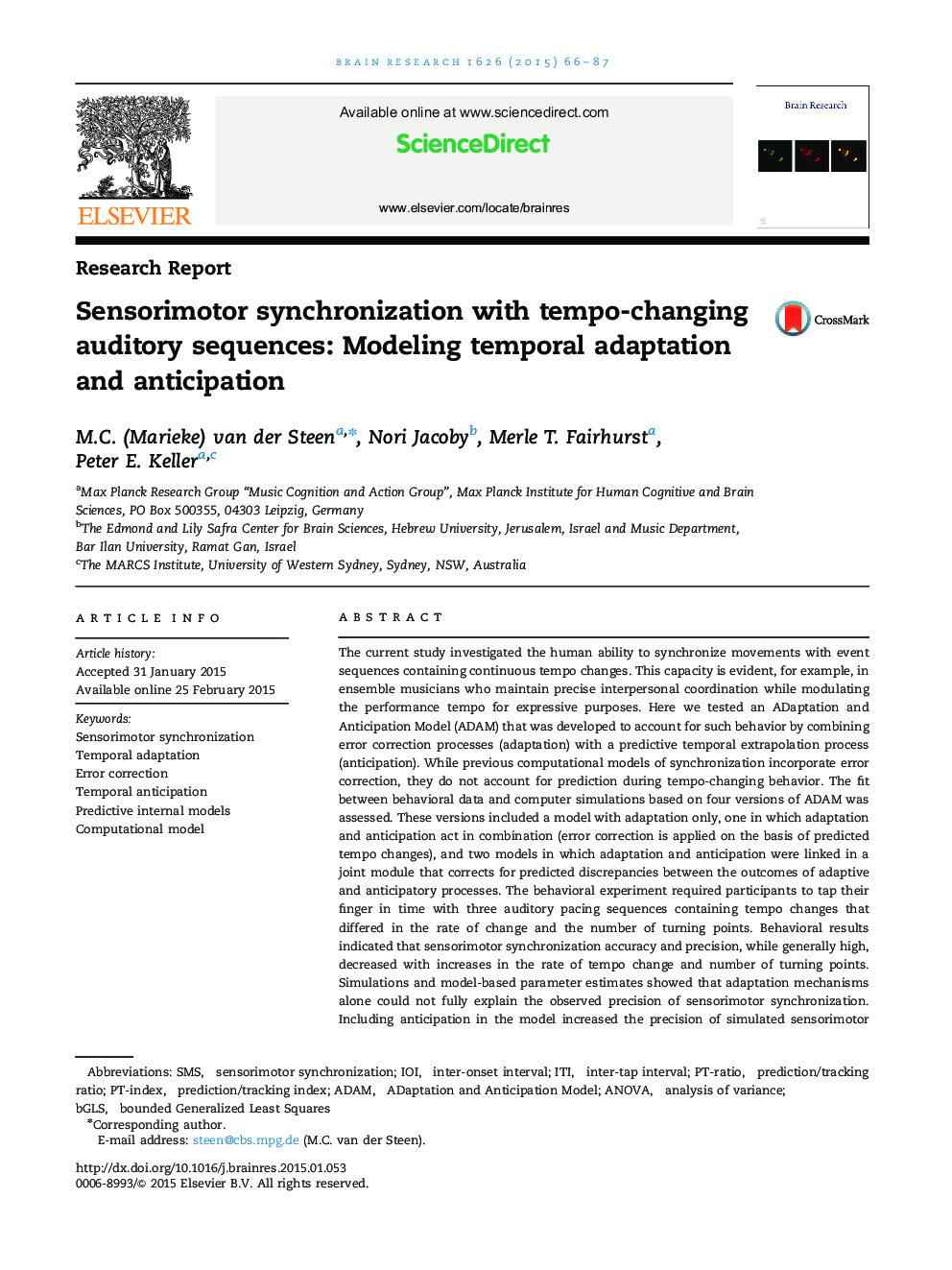| کد مقاله | کد نشریه | سال انتشار | مقاله انگلیسی | نسخه تمام متن |
|---|---|---|---|---|
| 6262801 | 1613813 | 2015 | 22 صفحه PDF | دانلود رایگان |
- The human ability to synchronize with tempo-changing sequences was examined.
- Computational models of adaptation and anticipation are developed.
- The fit between behavioral data and computer simulations was assessed.
- Both adaptation and anticipation mechanisms contributed to synchronization in humans.
- Joint internal models may play a role in linking adaptation and anticipation.
The current study investigated the human ability to synchronize movements with event sequences containing continuous tempo changes. This capacity is evident, for example, in ensemble musicians who maintain precise interpersonal coordination while modulating the performance tempo for expressive purposes. Here we tested an ADaptation and Anticipation Model (ADAM) that was developed to account for such behavior by combining error correction processes (adaptation) with a predictive temporal extrapolation process (anticipation). While previous computational models of synchronization incorporate error correction, they do not account for prediction during tempo-changing behavior. The fit between behavioral data and computer simulations based on four versions of ADAM was assessed. These versions included a model with adaptation only, one in which adaptation and anticipation act in combination (error correction is applied on the basis of predicted tempo changes), and two models in which adaptation and anticipation were linked in a joint module that corrects for predicted discrepancies between the outcomes of adaptive and anticipatory processes. The behavioral experiment required participants to tap their finger in time with three auditory pacing sequences containing tempo changes that differed in the rate of change and the number of turning points. Behavioral results indicated that sensorimotor synchronization accuracy and precision, while generally high, decreased with increases in the rate of tempo change and number of turning points. Simulations and model-based parameter estimates showed that adaptation mechanisms alone could not fully explain the observed precision of sensorimotor synchronization. Including anticipation in the model increased the precision of simulated sensorimotor synchronization and improved the fit of model to behavioral data, especially when adaptation and anticipation mechanisms were linked via a joint module based on the notion of joint internal models. Overall results suggest that adaptation and anticipation mechanisms both play an important role during sensorimotor synchronization with tempo-changing sequences.This article is part of a Special Issue entitled SI: Prediction and Attention.
Journal: Brain Research - Volume 1626, 11 November 2015, Pages 66-87
